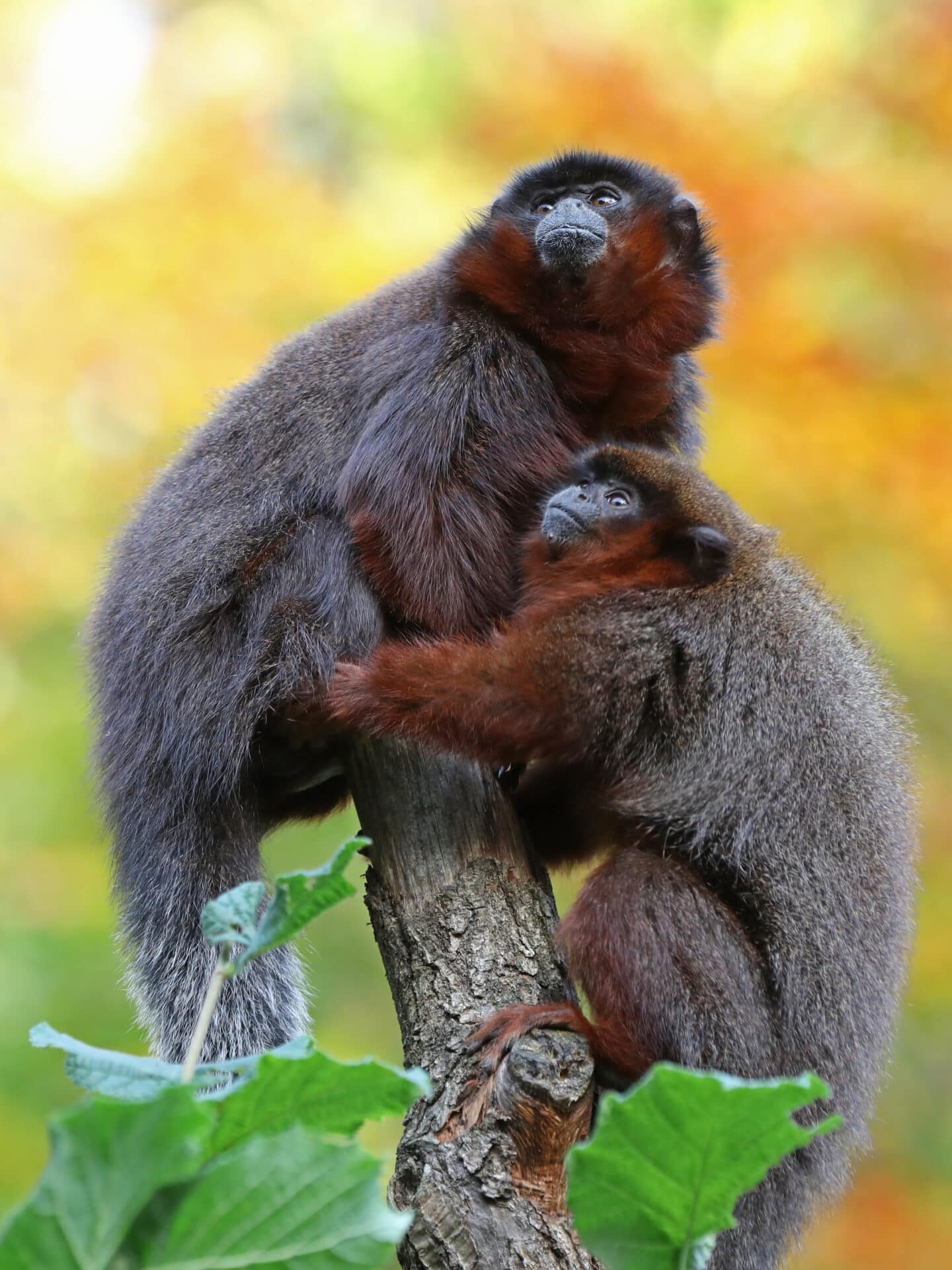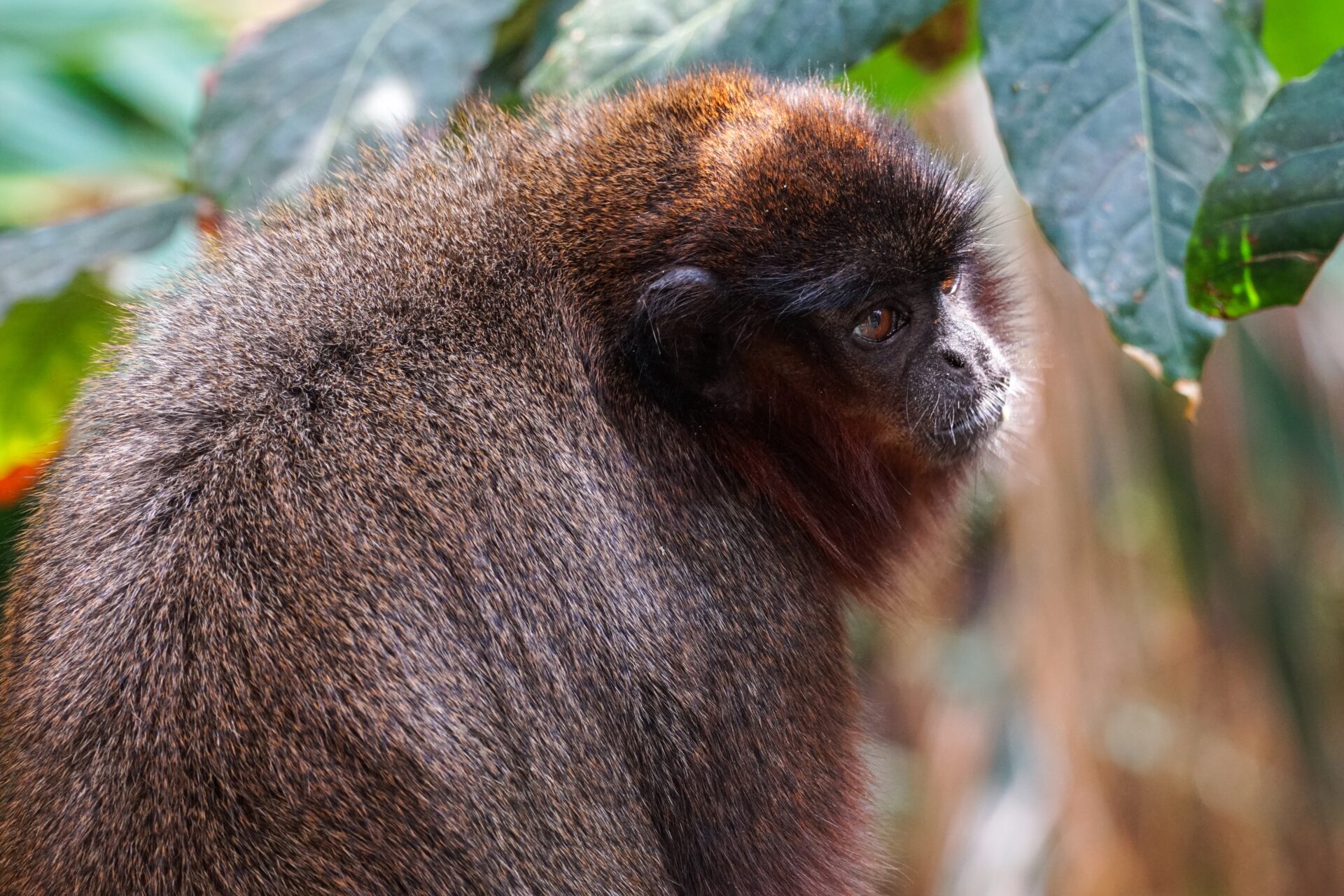Coppery titi monkey
Common Name: Coppery titi monkey
Scientific Name: Plecturocebus cupreus
Coppery titi monkeys are arboreal, which means they spend nearly all their time high up in the trees, only rarely coming to the ground. They are active during the day foraging for fruit and grooming one another, which cements social bonds within their family group.
An important social behaviour for Coppery titis is tail intertwining, which occurs between bonded pairs during both waking and sleeping hours
Male and female pairs defend their home range by frequently performing vocal duets at the borders of territories.
Fast Facts
-
Status
Least concern
-
Size
Head – Body: Males: 29-34 cm Females: 27-41 cm; Tail length: 47 cm
-
Weight
1-1.2 kg
-
Gestation
132 days
-
Young
1
-
Life span
20 years
In the wild
Coppery titis are mainly frugivores, consuming over 100 different types of fruit, which they supplement during the wet season with leaves and insects.
The coppery titi monkey is a New World monkey indigenous to northwest South America. They inhabit the Amazon rainforests of Peru and Brazil, where they are mainly found inland around the foothills of the Andes, away from areas prone to seasonal flooding. Here they occupy the middle and lower canopy layer where fruits are in abundance. Each family group lives in a small, distinct home range. Neighbouring family groups often encounter one another at the borders of these home ranges, which can sometimes lead to confrontations, although actual aggression is rare among titis.
Titis form monogamous breeding pairs. Females give birth to a single offspring each year, for which the male becomes the primary caregiver; starting to carry their young from 48 hours after birth until they are 6 months of age. Young adults leave the family group at around 2 to 3 years of age, often around the time of the arrival of new offspring.
Coppery titis are opportunistically hunted for bush meat, and their furry tails are used as dusters. Despite being listed as CITES Appendix II, live animals are also caught for the international pet trade. Coppery titis are also predated by a number of large raptors including the Guianan crested eagle (Morphnus guianensis) and the Ornate hawk-eagle (Spizaetus ornatus).
As coppery titi monkeys live predominantly within protected areas of the Amazon Basin there are currently no major threats to the existing population.



